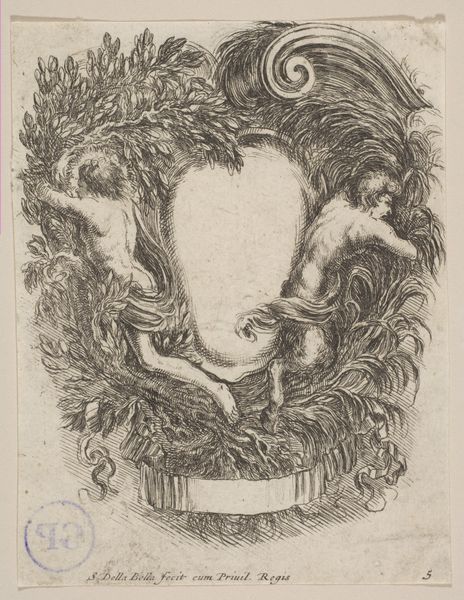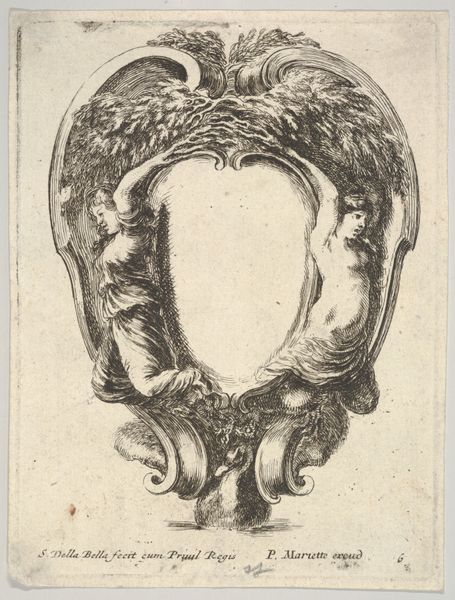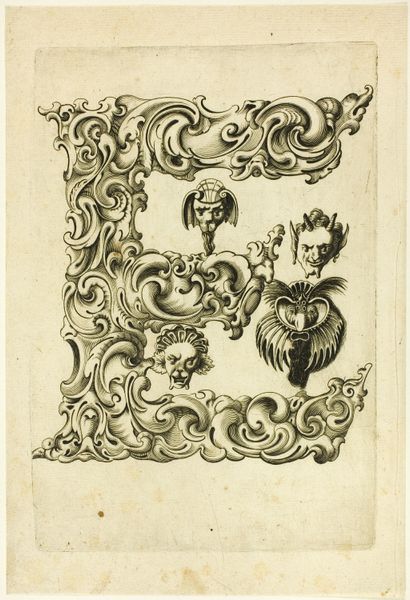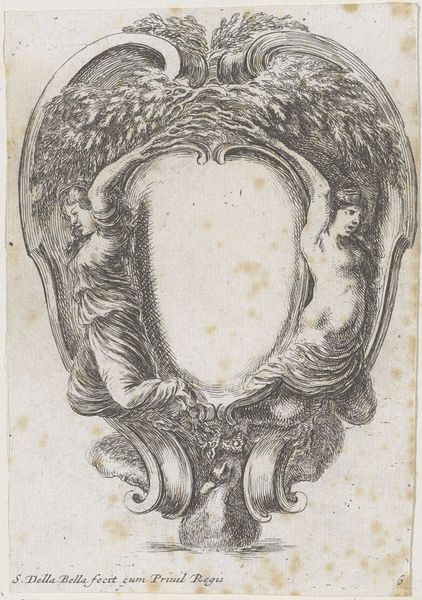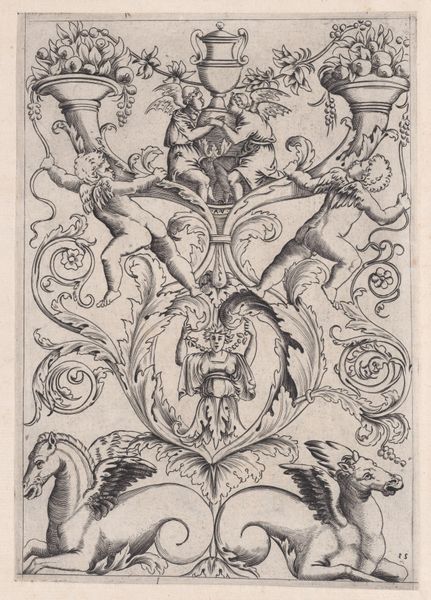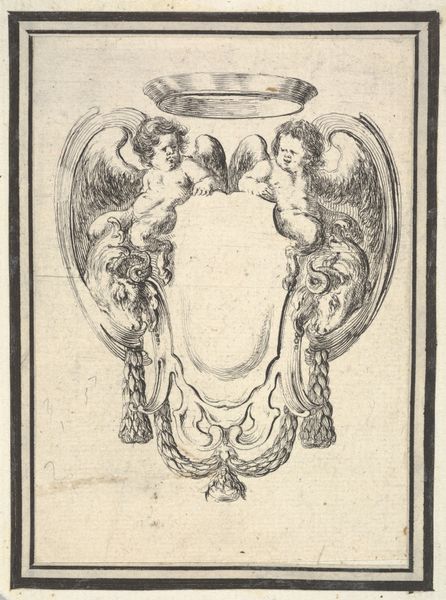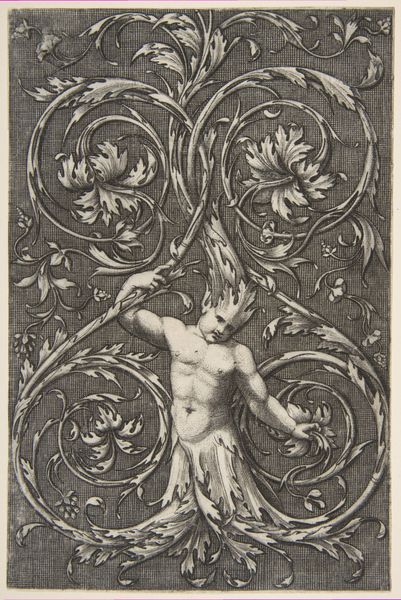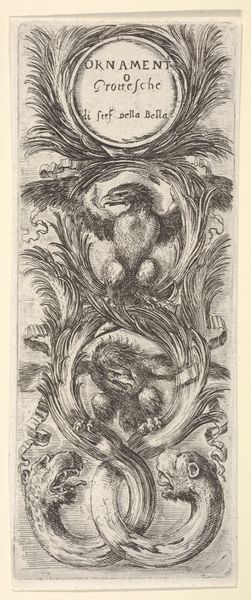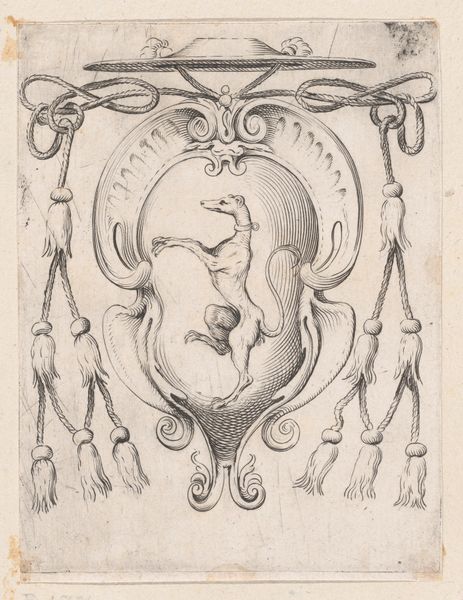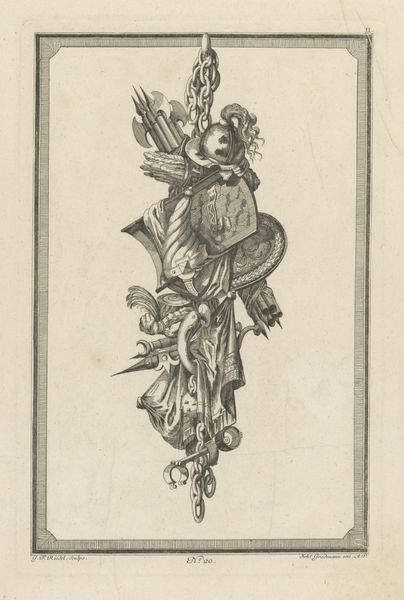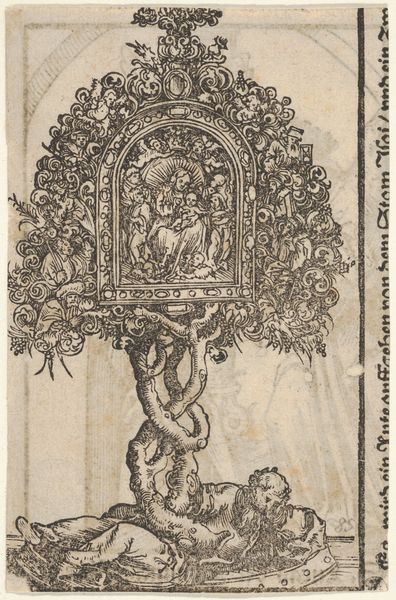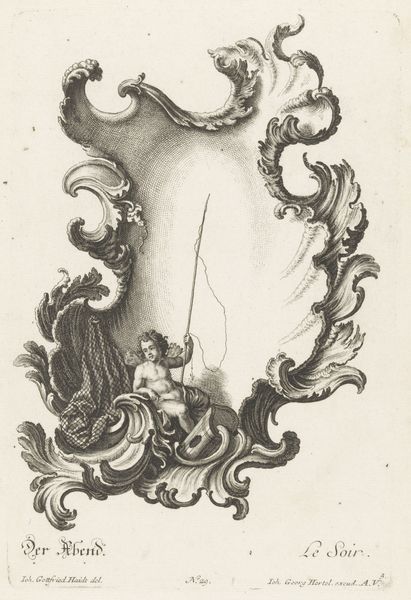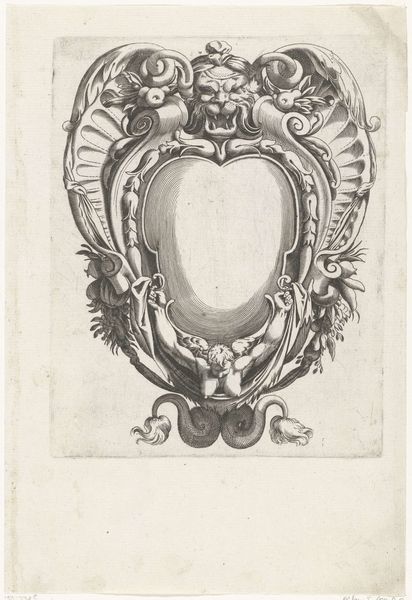
Plate 5: a cartouche flanked by Apollo and Pan, from 'Nouvelles inventions de Cartouches' 1647
0:00
0:00
drawing, print, etching
#
drawing
#
allegory
#
baroque
# print
#
etching
#
figuration
Dimensions: sheet: 6 x 4 5/8 in. (15.3 x 11.7 cm)
Copyright: Public Domain
Curator: I’d like to draw your attention to "Plate 5: a cartouche flanked by Apollo and Pan, from 'Nouvelles inventions de Cartouches'," an etching crafted in 1647 by Stefano della Bella. It resides here with us at the Metropolitan Museum of Art. Editor: It feels so ornate, almost aggressively decorative. The composition, framed by the gods of music and pastoral life, appears like a symbolic invitation to indulge in pleasure. I mean, the cartouche itself is entirely overtaken by its embellishments. Curator: Precisely. Della Bella was known for his detailed and imaginative designs, particularly for prints intended for aristocratic circles. "Nouvelles Inventions de Cartouches" served as inspiration for artisans crafting everything from furniture to tapestries. The presence of Apollo and Pan here certainly elevates the object beyond mere decoration. Editor: Right. Positioning these figures alongside the cartouche makes me wonder, what sort of proclamations, literally and metaphorically, were deemed worthy of such divine endorsement during the Baroque? How were these emblems actually received? Did their display bolster certain individuals or beliefs? Curator: A valuable question. These images broadcasted the patron’s cultural sophistication and alignment with classical ideals. Renaissance humanism lingered. Patrons who showcased designs featuring the figures of Apollo and Pan presented themselves as educated individuals aware of the historical significance behind these deities. Editor: So it’s not just aesthetic, but a statement of power and learnedness. What I am more drawn to, though, are the possible layers of intended meanings... Take the pairing of Apollo, symbolizing rationalism and artistic pursuit, with Pan, who signifies earthly pleasures and uninhibited instinct... The relationship seems very intentional. Curator: It represents an accepted dualism. The synthesis of the reasoned mind and unbridled passions which underscored many Baroque artistic and philosophical aims. What may seem like excess reveals considered values of the era. Editor: True, the composition serves almost as a microcosm of the tensions in Baroque society, this desire to contain unruly aspects of humanity within the framework of order and intellect, using allegory. It is something to remember when navigating our own contradictions today. Curator: Indeed. It presents a moment, rendered in ink, reflecting enduring aspects of human nature. It prompts us to contemplate both how images reinforce social hierarchies and offer a means for more philosophical expression.
Comments
No comments
Be the first to comment and join the conversation on the ultimate creative platform.
